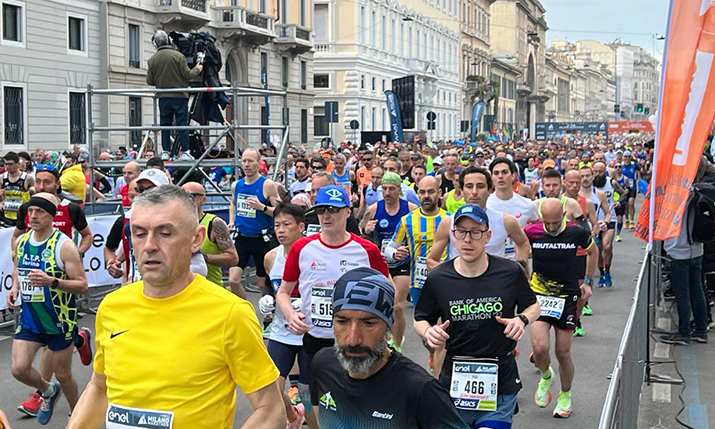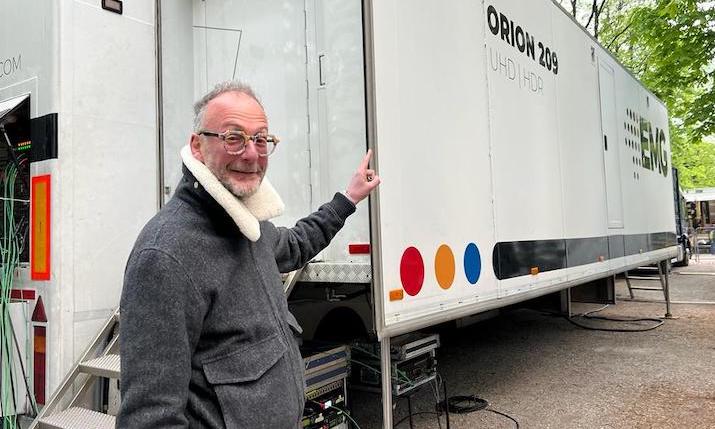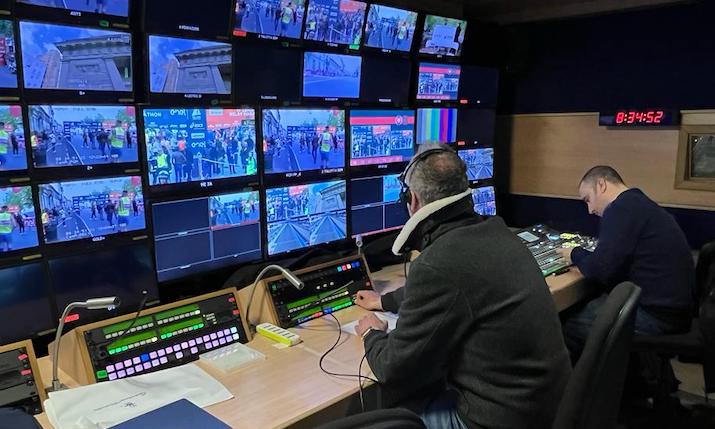EMG Italy and RCS deliver challenging ‘near-live’ broadcast of Milan Marathon

Around 20,000 runners took part in this year’s Milan Marathon
The much-loved Milan Marathon returned to the city’s streets on 2 April, welcoming around 20,000 runners, many of whom went on to achieve a personal best performance on the loop course.
The race, as always, featured illustrious guests, Italian and international champions, as well as fun runners from all over the world.
The athletes compete on what organisers call “a modern and complete course”, suitable for both advanced amateurs and top runners. Starting and finishing in Montanelli Park in the centre of Milan, the route passes by many of the city’s landmarks.
Organisers RCS once again relied on EMG Italy for the TV production, with the flagship Orion 209 OB on site at the start/finish line.
Fabio Bertini, sales consultant at EMG Italy and project manager of the marathon, explains: “This unique OB truck made it possible to package both the international feed and the customised one for the Italian unilateral broadcast of Sky Sport. Also this year, as per tradition, the broadcast was retransmitted an hour later than the actual performance, something that creates a complex production procedure, much more than a normal live television broadcast.
“In practice, this procedure, defined as ‘near-live’, at first glance seems to be simpler to build and more streamlined, because the entire live radio frequency section, helicopters and radio link planes are missing. In fact, this is not the case because it requires perfect synchronisation of everyone involved.
“Ninety percent of the event is covered by three motorbike cameras that follow the entire span of the race for more than two hours, as well as the pre-departure and post-arrival stages. While in a live broadcast it is enough to select the images arriving in the control room by the video mixer, here the mechanism is much more delicate and demanding.”
Near live
“The simulation of the live broadcast,” continues Bertini, “is based on continuous recordings made on XDCam discs by the cameras that follow the circuit and those on the start/finish line. This content must be physically transported on physical media by RCS fast relays and arrive with the director intact.
“This requires perfect timing in order to ensure that the director, Franco Scotton, on board the Orion 209 truck, can reconstruct the event in an absolutely synchronised way and with the continuity of a virtual live broadcast, immediately starting to switch between different points of view as soon as the records arrive.”
The first change and transport of discs takes place at 8km, the second at 20km and the last at the finish. The hour-delayed broadcast begins airing while the race is in full swing and continues for an hour after the actual race has concluded.

Director Franco Scotton
In addition to the three bikes, eight cameras located in the start/finish area of Montanelli Park, are operational from just before nine in the morning. Special supports are also used here, such as a jimmy-jib dedicated to a camera with wide optics (14x), a camera working in a super slomo configuration with long optics, a shoulder radio-camera entirely dedicated to covering the start/finish, and an EFP configuration camera to film the podium and prize giving.
The near-live transmission is made possible thanks to the satellite uplink vehicle, which, exactly one hour after the official start of the marathon, follows the live broadcast for three and a half hours.
Two galleries in one
The Orion 209 packaged the feed for the international live broadcast thanks to its main gallery, while at the same time its second gallery was used to create the Sky Sport feed.
RCS and EMG Italy also set up two tents for Sky in the park adjacent to the start/finish: one for the commentary station and the second in a mini outdoor studio configuration, where interviews were held.

Inside Orion 209
Here, four cameras in EFP configuration were used and the graphics, as well as the timing, station breaks and animations of the track, were provided by RCS.
4G backpacks were used on the bikes which also produced images for direct repurposing on the screens placed at the start/finish for the public, operators and journalists.
The setup
“The setup of such an event,” concludes Bertini, “is rather complex and involves a rather long period of time, from the morning of the day before until midnight that night, and then on the morning of the event all personnel were already on the track at 7am and they were busy until 5pm.”
In addition to the main truck and satellite uplink vehicle, the TV compound also housed a mobile vehicle dedicated to graphics, another small vehicle dedicated to managing the RF reception of backpacks and editing dedicated to a 15-minute service for the international feed and a 200KW bi-generator power truck.
The audio was recorded in stereo with ambient microphones for each camera for the international feed and an international commentary station was also set up in English.

